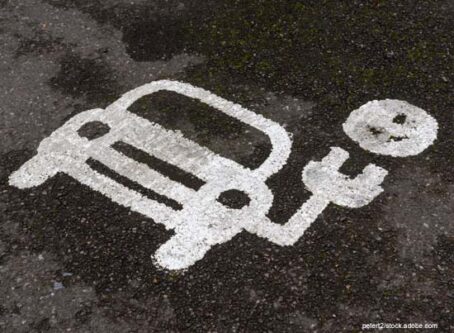Seven highway safety projects get a federal shout-out
Seven highway safety projects have been singled out for commendation by the Federal Highway Administration and the Roadway Safety Foundation.
Highway safety projects by state departments of transportation in California, Florida, North Carolina and Texas were among those earning commendation.
U.S. Transportation Secretary Pete Buttigieg presided over a virtual award ceremony on Oct. 6 on Capitol Hill, according to a news release from the Roadway Safety Foundation.
The seven winners were selected from a nationwide field of applicants for the highway safety awards, which are sponsored jointly by FHWA and the foundation. Begun in 1999, the biennial program honors projects and programs that cost-effectively help the nation achieve progress toward eliminating highway fatalities and serious injuries.
“Congratulations to today’s seven honorees for the remarkable work they’ve done to protect the traveling public,” Buttigieg said during recorded comments. “They are proof that we have no shortage of willpower or good ideas for improving roadway safety.”
Preliminary data from the National Highway Traffic Safety Administration show that 38,680 people died in motor vehicle traffic crashes in 2020 – a 7.2% increase from 2019. This increase occurred despite a 13.2% decrease in vehicle miles traveled due to the pandemic and is the highest number of fatalities since 2007.
Applicants were encouraged to nominate highway safety projects and programs that are innovative, effective and cost-efficient. The awards covered two categories: infrastructure and operational improvements; and program planning, development and evaluation.
Seven winning highway safety projects
- California DOT for its 2020-24 Strategic Highway Safety Plan to reduce fatalities and injuries on state roads. Caltrans designated high-priority challenge areas, expanded and diversified membership of the safety plan committee, implemented the program with innovative tools, and continually evaluates.
- Florida DOT studied the use of active work zone awareness devices that employ radar in combination with LED signs to warn drivers of upcoming work zones, displays their travel speed, and delivers safety messaging. FDOT also linked the awareness devices to drivers using the Waze navigation app. Vehicle speeds entering arterial work zones dropped by 10.6% using the system, safe driving behavior increased by 39%, and risky driving declined by 34%.
- North Carolina DOT’s Long-life Pavement Markings Safety Initiative helped reduce lane departure crashes by helping drivers better see markings on curvy roads, in inclement weather or at night. NCDOT tested the long-life markings on more than 400 miles of roadway, recording an overall 13% reduction in lane departure crashes. The long-life markings also are designed to provide at least five to seven years of adequate retro-reflectivity and pavement delineation, as compared with approximately two years from standard markings.
- Texas DOT and Texas A&M Transportation Institute for its Safety Scoring Tool. TxDOT partnered with the Texas A&M Transportation Institute to develop a tool to assess the total effects of changes in lane and shoulder width, horizontal and vertical curve geometry, clearances to objects, and other factors. The highway safety tool is now required for all rural two and multilane not-access-controlled projects, ranging from routine maintenance to complete reconstructions, fostering a proactive, rather than passive or reactive, approach to safety.
- Village of Whitefish Bay, Wis., (a Milwaukee suburb) for its communitywide safety improvements. These included dynamic speed feedback signs, “yield to pedestrian” signs, design changes such as high-visibility crosswalks, installation of median in the center of highways, lengthier pedestrian intervals at signals and better street lighting. The village also installed “Danish Offsets,” crosswalk paths that are oriented to provide more direct sight lines for pedestrians to observe oncoming vehicles. Since 2015, communitywide crashes are down 39%.
- City of Bellevue, Wash., for its application of a video analytics program to identify highway safety challenges in near-real-time. The smart technologies convert raw video from existing traffic cameras into flow, speed and conflict event data.
- Broward Metropolitan Planning Organization for its Complete Streets Master Plan, which is measurably improving safety on Wilton Drive in the Fort Lauderdale area and promises similar benefits on other local roadways.
The honorable mentions:
- The Florida DOT for its Local Technical Assistance Program to improve the skills and increase the knowledge of the transportation workforce on roadway safety via virtual training and technical assistance.
- The Montana DOT for its reconstruction of an antiquated segment of U.S. Highway 89 that provides a key entrance to Glacier National Park.
- Portland, Conn., for forming of a grassroots Complete Streets Group to coordinate with local officials in writing, adopting and implementing a Complete Streets Policy.
Winners were selected by a panel of judges from a variety of disciplines.
The Roadway Safety Foundation is a 501(c)(3) charitable and educational organization whose mission is to reduce the frequency and severity of motor vehicle crashes, injuries, and fatalities through improvements to roadway systems and their environment. LL









